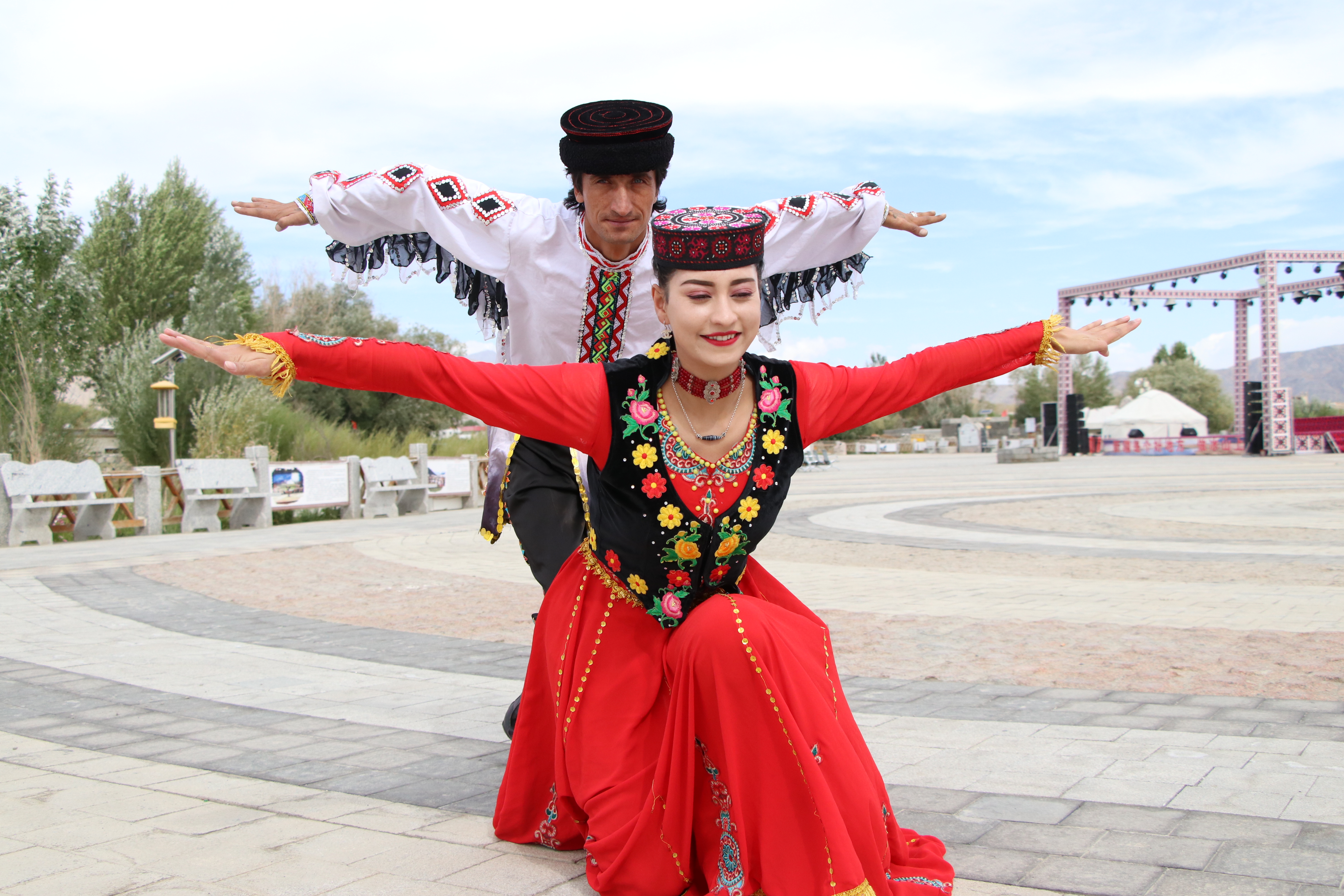Eagle dancers spread their traditional wings





Editor's note: From arts and crafts to knowledge and skills, China's intangible cultural heritage is invaluably embedded in its ethnic communities. This series looks at the latest efforts to preserve and promote the country's inherited traditions and living expressions.

The eagle is so revered by Tajik people in the far west of the Xinjiang Uygur autonomous region that they perform a dance in its honor.
Visitors to the Pamir area of Tashikurgan Tajik autonomous county can watch performances of the eagle dance during the peak tourist season from May to August.
The Tajik dancers, wearing costumes with sleeves decorated with long feathers, stretch their necks, extend their arms and make spins, imitating a swooping eagle. The performance on an outdoor stage is made more spectacular by the majestic, snow-capped mountains in the distance.
The unusual folk dance is a tradition of the Tajik people who mainly inhabit Tashikurgan, Yarkant, Yecheng and several other counties in Xinjiang.
To local people, the eagle symbolizes honesty, kindness, bravery and strength. Folk songs and stories about the bird of prey are widely shared among Tajik people.
Imitating the eagle's movements gradually developed into a popular dance among Tajik people, performed during festivals and celebrations or as simple entertainment.
The dance is also performed on special occasions such as horse races and mounted sheep-pulling events, called buzkashi, with musicians playing flutes made of eagle bones and drums to cheer on participants.
At the start of the dance, men and women sit in a circle and then choose a partner. The dancers nod and stamp on the ground to mimic eagles frolicking. Sometimes they bend down and bring their arms back behind their bodies to imitate a bird hovering in the air. All movements are graceful and vibrant.
The eagle dance is also considered a traditional art form that has been part of the lifestyles of Tajik people for generations. In 2006, it was registered as a national intangible cultural heritage item.




















